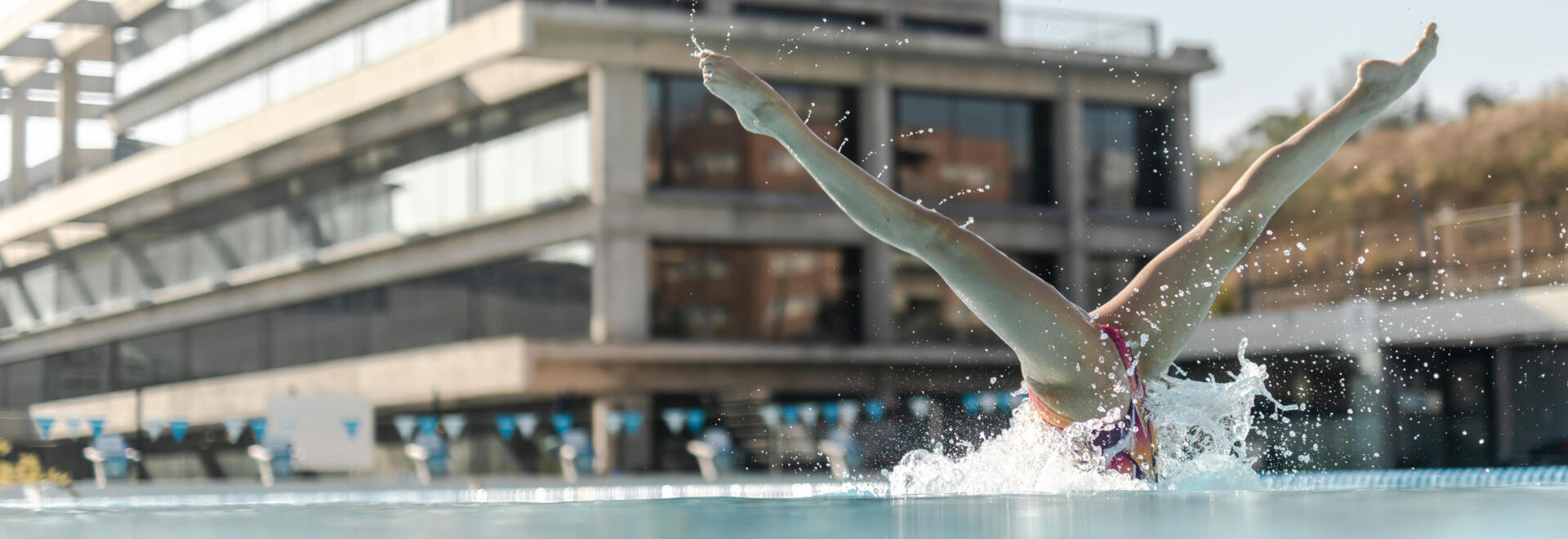Artistic swimming events
As we have already mentioned, there are various artistic swimming trials: imposed figures, solos, duets (women or mixed), ballets (eight swimmers), combos
(ten swimmers) and highlights (ten swimmers). Apart from the imposed figures, the combo and the highlights, each event consists of two stages: the technical and free routines.
Imposed figures are exactly what their name says. The swimmers perform a series of technical figures one by one in front of the judges. Currently, men are only accepted in mixed duets in international competitions. Solos, ballets, combos and highlights are for women only.
The technical routines are shorter. The swimmers are judged on the technical figures that are performed in a specific order. In the free routines, the coaches and swimmers can give free rein to their creativity! The ballets in this event are longer and there are more artistic effects. The combo is a longer ballet, comprising solos,
duets and sequences four to six or ten swimmers. The possibilities are unlimited! Highlights are the most breath-taking event. They are much shorter and comprise mainly lifts, which add more rhythm and can be very impressive.
Ballets are always performed to music or a composition of pieces of music reflecting a given theme that matches the swimmers' swimsuits and hair styles.
Every trial must last a given time. If this time is not reached or is exceeded, a penalty is applied to the team's final score. Penalties are also applied if the time spent dancing on the poolside before entering the water is too long, or if one of the swimmers touches the bottom or the side of the pool during the event.
In international competitions and certain domestic competitions, a camera is installed on the bottom of the pool to check that the swimmers do not break the rules.



